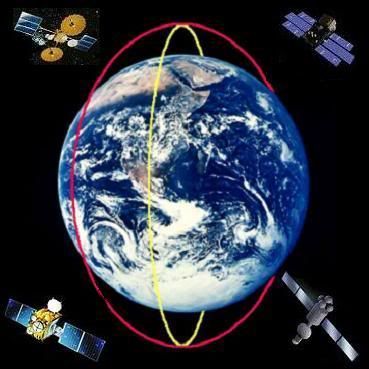|
|
Post by glactus on Dec 16, 2011 0:25:40 GMT
 Iridium Satellite in orbit A polar orbit is an orbit in which a satellite passes above or nearly above both poles of the body being orbited (usually a planet such as the Earth, but possibly another body such as the Sun) on each revolution. It therefore has an inclination of (or very close to) 90 degrees to the equator. Except in the special case of a polar geosynchronous orbit, a satellite in a polar orbit will pass over the equator at a different longitude on each of its orbits.  Satellites in Polar orbit Polar orbits are often used for Earth-mapping, Earth observation, and reconnaissance satellites, as well as for some weather satellites. The Iridium satellite constellation also uses a polar orbit to provide telecommunications services. The disadvantage to this orbit is that no one spot on the Earth's surface can be sensed continuously from a satellite in a polar orbit.  Inspecting the Iridium satellite It is common for near-polar orbiting satellites to choose a sun-synchronous orbit: meaning that each successive orbital pass occurs at the same local time of day. This can be particularly important for applications such as remote sensing of the atmospheric temperature, where the most important thing to see may well be changed over time.  Credits: These are non copywrite images Text by wikipedia Space art by Glactus |
|